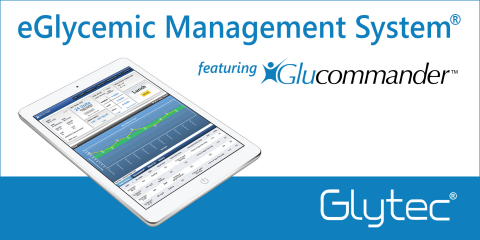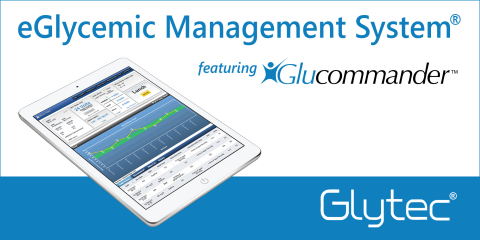WALTHAM, Mass.--(BUSINESS WIRE)--The United States Patent and Trademark Office (USPTO) has issued two more patent allowances for Glytec’s FDA-cleared proprietary software used by healthcare providers to guide the dosing of insulin. The allowances, which comprise a combined total of 52 claims, cite systems and methods specific to subcutaneous basal and bolus insulin. To date, Glytec has amassed an intellectual property portfolio of 18 issued or allowed patents for its eGlycemic Management System® (eGMS®) and has several dozen patents pending.
Use of eGMS® is proven to prevent the frequency, risks and costs of hypoglycemia, one of the top three preventable adverse drug events (ADEs) identified by the U.S. Department of Health and Human Services. According to a recent study in Medical Care, an estimated 600,991 inpatient hypoglycemia ADEs in 2013 (200.5/10,000 discharges) resulted in an average marginal cost of $4,312, totaling $2.59 billion. Likewise, a recent study in JAMA observed that insulin was the second most commonly implicated drug in 2013-2014 emergency department visits for ADEs.
“The proposed CMS quality measure for severe hypoglycemia further underscores the gravity of this problem,” says Glytec’s Chief Medical Officer and diabetologist, Andrew S. Rhinehart, MD, FACP, FACE, CDE, BC-ADM, CDTC. “It’s exciting to see the groundswell of support the measure is getting from all sectors of the healthcare industry.”
“Evidence shows that 79% of people with type 2 diabetes discontinue insulin use within a year if they experience an episode of hypoglycemia during the first six months,” says Glytec’s Senior Vice President Research & Development, Robby Booth, “and insulin remains significantly underutilized among people with type 2 diabetes for this very reason. By reducing hypoglycemia, our technology helps overcome this dynamic and opens the door to safe and effective insulin management for millions of people with type 2 diabetes who have been unable to achieve their A1C and blood glucose goals.”
The two new patent allowances for Glytec’s eGMS® depict: [highly abridged and consolidated]
- A dosing controller comprising data processing and memory hardware receives a blood glucose measurement from a glucose meter (with or without an associated time of midsleep, pre-breakfast, pre-lunch, pre-dinner or bedtime); determines a blood glucose type; obtains a carbohydrate-to-insulin ratio for the patient; determines and applies an adjustment factor; determines a recommended meal or pre-meal correction bolus based on the adjusted carbohydrate-to-insulin ratio (alternatively, receives a number of carbohydrates consumed by the patient for an associated meal type and divides the number of carbohydrates by the adjusted carbohydrate-to-insulin ratio); and transmits the recommended meal bolus or pre-meal correction bolus to an administration device comprising a doser configured to administer a number of units of insulin to the patient using the recommended meal bolus or pre-meal correction bolus.
- A dosing controller comprising data processing and memory hardware receives a blood glucose measurement from a glucose meter; determines whether the previous next scheduled blood glucose measurement is less than a hypoglycemia limit for the patient; and when applicable, determines a reduced insulin dose to prevent a next scheduled blood glucose measurement from falling below the hypoglycemia limit, subtracting the reduced insulin dose from the recommended meal bolus to determine the recommended dose for the patient to administer.
- A dosing controller comprising data processing and memory hardware receives a blood glucose measurement from a glucose meter; obtains an insulin sensitivity factor for the patient from the memory hardware, input via a computing device associated with an authorized medical professional; determines whether the current blood glucose measurement exceeds the midpoint of the target range for the patient; and when applicable, determines a correction dose and transmits the correction dose from the data processing hardware to the user device, causing the device to display the correction dose.
About Glytec
Glytec is the pioneer of personalized digital therapeutics, enabling best practices for inpatient and outpatient insulin management. The company’s patented and FDA-cleared software-as-a-medical-device solutions improve the safety and health of people with diabetes and make insulin a more effective medication option for the millions unable to achieve their treatment goals. Glytec combines evidence-based decision support technologies with expert clinical services to optimize insulin therapies in the hospital and at home, leading to reductions in hypoglycemia and other complications as well as avoidable ED visits, hospitalizations, readmissions and drug waste. The company has offices in Waltham, Massachusetts and Greenville, South Carolina. For more information visit www.glytecsystems.com.




